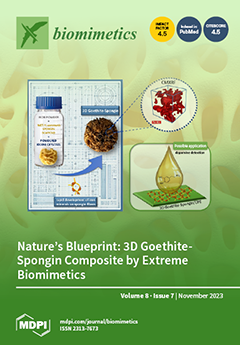The effects of incorporating a pioneer chitosan–TiO
2 nanocomposite on the mechanical and physical properties of room-temperature vulcanization (RTV) maxillofacial A-2186 silicone under accelerated aging protocols were rigorously examined. This investigation utilized 450 samples distributed across five distinct silicone classifications and assessed their
[...] Read more.
The effects of incorporating a pioneer chitosan–TiO
2 nanocomposite on the mechanical and physical properties of room-temperature vulcanization (RTV) maxillofacial A-2186 silicone under accelerated aging protocols were rigorously examined. This investigation utilized 450 samples distributed across five distinct silicone classifications and assessed their attributes, such as tensile strength, elongation, tear strength, hardness, and surface roughness, before and after various accelerated aging processes. Statistical methodologies, including a one-way ANOVA, Tukey’s HSD, and Dunnett’s T3, were employed based on the homogeneity of variance, and several key results were obtained. Silicones infused with 1 wt.% chitosan–TiO
2 showed enhanced tensile strength across various aging procedures. Moreover, the 1 wt.% TiO
2/Chitosan noncombination (TC) and 2 wt.% TiO
2 compositions exhibited pronounced improvements in the elongation percentage. A consistent rise was evident across all silicone categories regarding tear strength, with the 1 wt.% chitosan–TiO
2 variant being prominent under certain conditions. Variations in hardness were observed, with the 1 wt.% TC and 3 wt.% chitosan samples showing distinctive responses to certain conditions. Although most samples displayed a decreased surface roughness upon aging, the 1 wt.% chitosan–TiO
2 variant frequently countered this trend. This investigation provides insights into the potential of the chitosan–TiO
2 nanocomposite to influence silicone properties under aging conditions.
Full article






